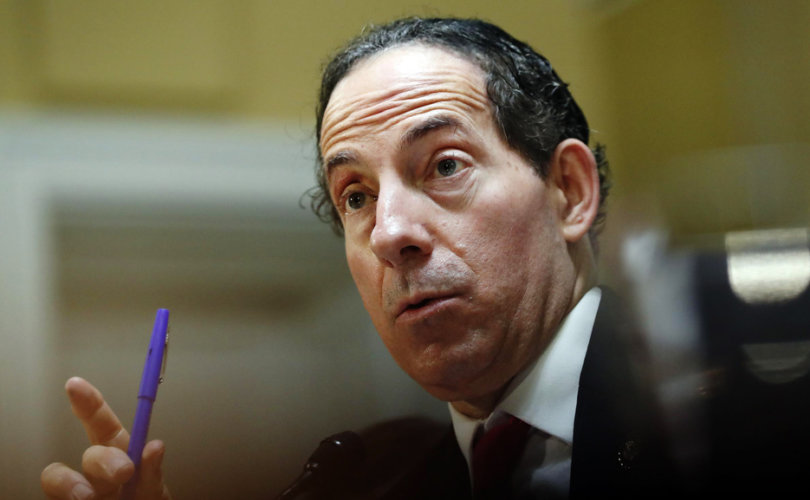Big Tech is censoring us. Subscribe to our email list and bookmark LifeSiteNews.com to continue getting our news. Subscribe now.
WASHINGTON, D.C., February 10, 2021 (LifeSiteNews) – As lead impeachment manager Rep. Jamie Raskin (D-MD) calls former President Donald Trump the “inciter-in-chief” for protesting the certification of the 2020 election, critics have called attention to Raskin’s own past refusal to accept the outcome of the 2016 election.
During the second day of the Senate impeachment trial, Raskin and fellow impeachment manager Rep. Joe Neguse (D-CO) argued that Trump was responsible for the January 6 riot at the Capitol building not only via the words of his speech that day, but because he spent months pursuing allegations of election fraud in several states “widespread” enough to flip the outcome to now-President Joe Biden.
Trump’s continued insistence that he was the true “landslide” winner, Raskin said, is “the big lie that was responsible for inflaming and inciting the mob in the first place.”
In January 2017, however, Raskin himself objected to the certification of Florida’s electoral votes on the claim that ten of the state’s electors were supposedly not legally qualified to serve as electors under state law. Biden, then Vice President and as such President of the Senate, rejected Raskin’s objection as out of order.
Lead impeachment manager Jamie Raskin objected to Florida's electoral votes in 2017. pic.twitter.com/FsLvJLvA8v
— Phil Kerpen (@kerpen) January 13, 2021
Sen. Rand Paul (R-KY) suggested it was “hubris” to select a Democrat who had objected to certifying one election to lead an impeachment over objections to certifying another:
So, it’s ok for Dem Jamie Raskin to try to ‘overturn’ Trump electors but it’s incitement to violence when Trump urged Congress to “overturn” Biden electors? Isn’t that called hypocrisy? https://t.co/cWqLkDymu9
— Senator Rand Paul (@RandPaul) February 10, 2021
Rep Raskin says Trump promoted the “big lie” that the election was stolen but didn’t Raskin promote the “big lie” that Trump stole the election in 2016? Wasn’t it Jamie Raskin who ‘incited violence’ by objecting to Trump electors?
— Senator Rand Paul (@RandPaul) February 10, 2021
Protesters broke into the U.S. Capitol Building on January 6 after the “March to Save America” rally, where Trump said supporters would march “over to the Capitol building to peacefully and patriotically make your voices heard,” where “we're going to cheer on our brave senators and congressmen-and-women” who were meeting to formally object to the certification of electoral votes from a handful of states.
Viral videos showed protesters engaging in physical altercations with police, pushing against security barricades, breaking through a window, trespassing in congressional offices, and climbing on walls, causing the vote certification to be suspended and lawmakers to be evacuated from the chambers. While many were let in by police and simply walked the halls after the initial breach, there were several deaths, including a protester shot by police, a protester trampled by other protesters, a police officer whose cause of death remains unknown, and others due to unspecified “medical emergencies.”
The march on the Capitol was a pre-planned part of the rally, and the violence was started by people who either left Trump’s speech early or skipped it entirely, but House Democrats quickly moved to impeach Trump for supposedly “inciting” the violence.
Ultimately, the trial is not expected to yield the 67 votes necessary to convict Trump and disqualify him from future office.

